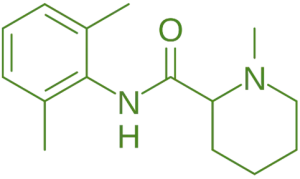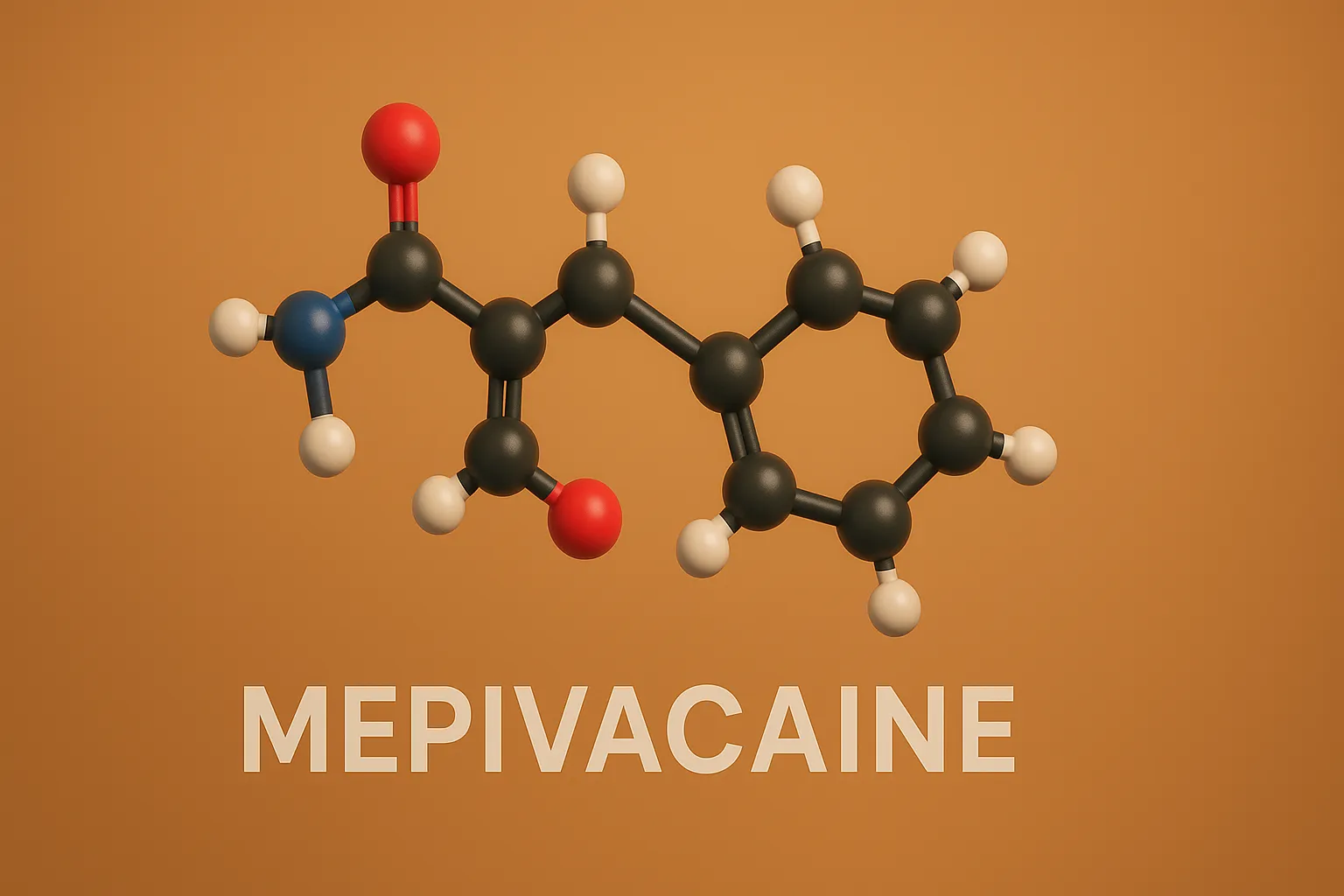Mepivacaine is an amide local anesthetic used for infiltration and regional anesthesia with rapid onset and moderate duration.
Structure of Mepivacaine
- It is an amide-type local anesthetic similar to lidocaine but with a methyl group attached to the diethylaminoethyl side chain, enhancing its potency.
- Chemical Formula: C₁₄H₂₈N₂O

Mode of Action
- Sodium Channel Blockade: Blocks voltage-gated sodium channels, preventing nerve impulse transmission.
- Membrane Stabilization: Reduces neuronal excitability by stabilizing nerve membranes.
Uses
- Local Anesthesia: Used in dental procedures, minor surgical interventions, and obstetric anesthesia.
- Topical Preparations: Applied to mucous membranes and skin for temporary numbing.
- Infiltration Anesthesia: Injected to provide localized numbness during medical procedures.
Side Effects of Mepivacaine
- Local Reactions: Pain, redness, or swelling at the injection site.
- Systemic Toxicity: Potential CNS excitation (e.g., seizures) and cardiovascular effects (e.g., arrhythmias) with excessive doses.

